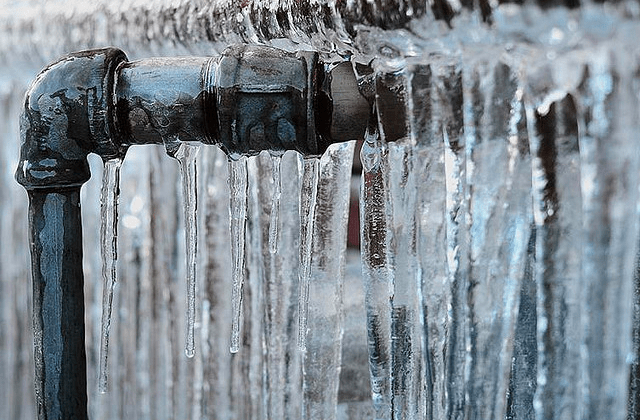Protecting Your Pipes from Cold Weather Issues: Key Strategies
Protecting Your Pipes from Cold Weather Issues: Key Strategies
Blog Article
What're your ideas regarding 6 Ways to Prevent Frozen Pipes?

Winter can ruin your plumbing, specifically by freezing pipes. Here's just how to stop it from happening and what to do if it does.
Intro
As temperature levels decrease, the risk of icy pipes increases, potentially leading to expensive fixings and water damage. Understanding exactly how to avoid frozen pipelines is crucial for home owners in cold environments.
Avoidance Tips
Insulating susceptible pipelines
Cover pipelines in insulation sleeves or utilize heat tape to protect them from freezing temperature levels. Focus on pipelines in unheated or outside locations of the home.
Heating methods
Maintain indoor areas properly heated up, especially locations with pipes. Open cupboard doors to permit warm air to flow around pipes under sinks.
Just how to recognize frozen pipelines
Search for decreased water circulation from faucets, unusual smells or noises from pipelines, and noticeable frost on exposed pipes.
Long-Term Solutions
Structural changes
Think about rerouting pipes away from exterior walls or unheated locations. Add added insulation to attic rooms, cellars, and crawl spaces.
Updating insulation
Buy high-grade insulation for pipelines, attic rooms, and wall surfaces. Proper insulation assists preserve regular temperature levels and minimizes the risk of icy pipelines.
Shielding Exterior Pipes
Yard tubes and outdoor taps
Separate and drain pipes garden tubes prior to wintertime. Install frost-proof faucets or cover outdoor faucets with shielded caps.
Recognizing Icy Pipelines
What creates pipelines to freeze?
Pipelines freeze when exposed to temperature levels below 32 ° F (0 ° C) for prolonged durations. As water inside the pipelines freezes, it increases, taxing the pipeline wall surfaces and possibly triggering them to break.
Dangers and damages
Icy pipelines can bring about water interruptions, residential property damage, and expensive repair work. Burst pipelines can flood homes and trigger substantial architectural damage.
Signs of Frozen Piping
Identifying frozen pipelines early can avoid them from bursting.
What to Do If Your Pipelines Freeze
Immediate actions to take
If you believe frozen pipelines, keep taps open up to eliminate stress as the ice melts. Utilize a hairdryer or towels taken in hot water to thaw pipes gradually.
Verdict
Stopping icy pipes requires aggressive steps and quick feedbacks. By comprehending the causes, indicators, and safety nets, property owners can shield their plumbing during winter.
5 Ways to Prevent Frozen Pipes
Drain Outdoor Faucets and Disconnect Hoses
First, close the shut-off valve that controls the flow of water in the pipe to your outdoor faucet. Then, head outside to disconnect and drain your hose and open the outdoor faucet to allow the water to completely drain out of the line. Turn off the faucet when done. Finally, head back to the shut-off valve and drain the remaining water inside the pipe into a bucket or container. Additionally, if you have a home irrigation system, you should consider hiring an expert to clear the system of water each year.
Insulate Pipes
One of the best and most cost-effective methods for preventing frozen water pipes is to wrap your pipes with insulation. This is especially important for areas in your home that aren’t exposed to heat, such as an attic. We suggest using foam sleeves, which can typically be found at your local hardware store.
Keep Heat Running at 65
Your pipes are located inside your walls, and the temperature there is much colder than the rest of the house. To prevent your pipes from freezing, The Insurance Information Institute suggests that you keep your home heated to at least 65 degrees, even when traveling. You may want to invest in smart devices that can keep an eye on the temperature in your home while you’re away.
Leave Water Dripping
Moving water — even a small trickle — can prevent ice from forming inside your pipes. When freezing temps are imminent, start a drip of water from all faucets that serve exposed pipes. Leaving a few faucets running will also help relieve pressure inside the pipes and help prevent a rupture if the water inside freezes.
Open Cupboard Doors
Warm your kitchen and bathroom pipes by opening cupboards and vanities. You should also leave your interior doors ajar to help warm air circulate evenly throughout your home.

I ran across that piece of writing on How To Avoid Freezing Pipes when looking around the search engines. Enjoyed our blog entry? Please share it. Help somebody else locate it. I love reading our article about Winter Plumbing Precautions: Preventing Frozen Pipes.
Get A Free Quote Report this page